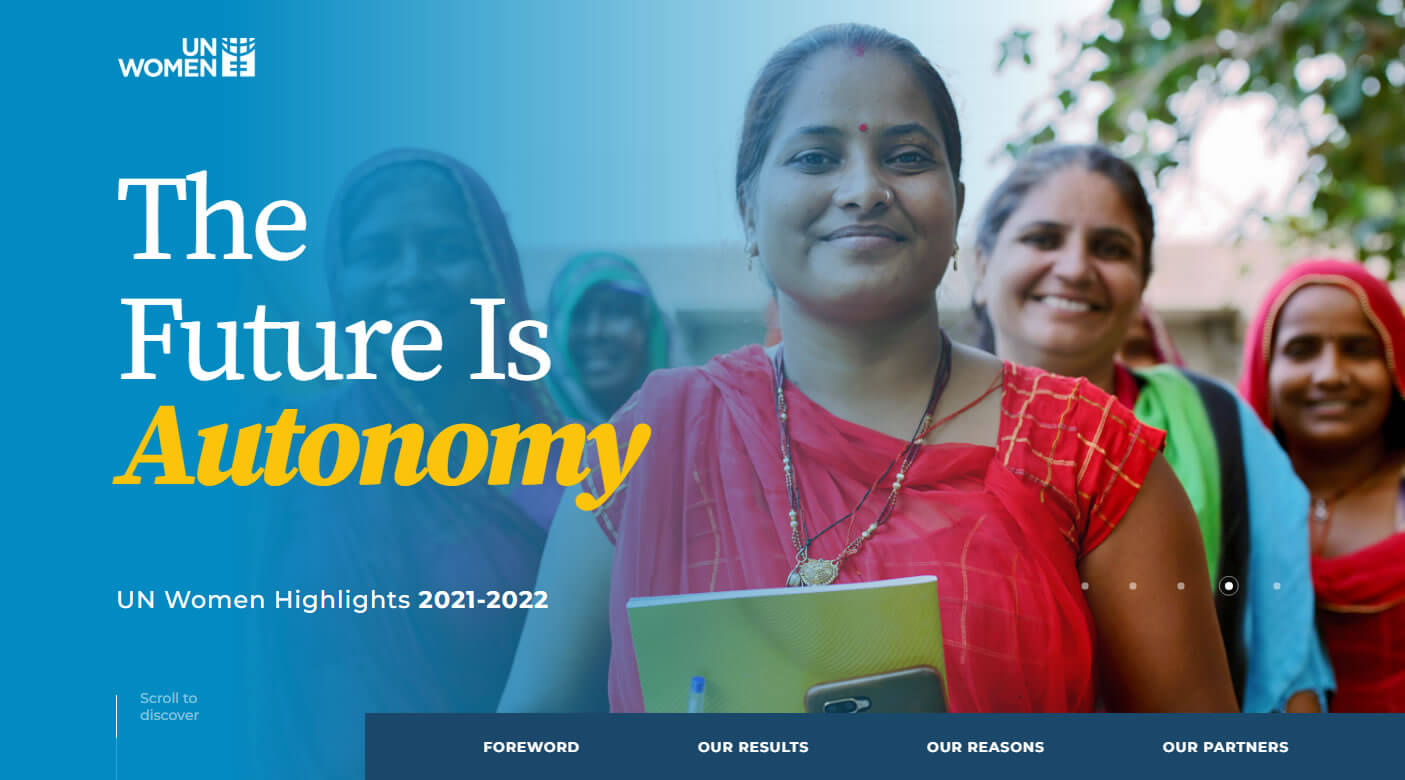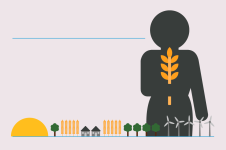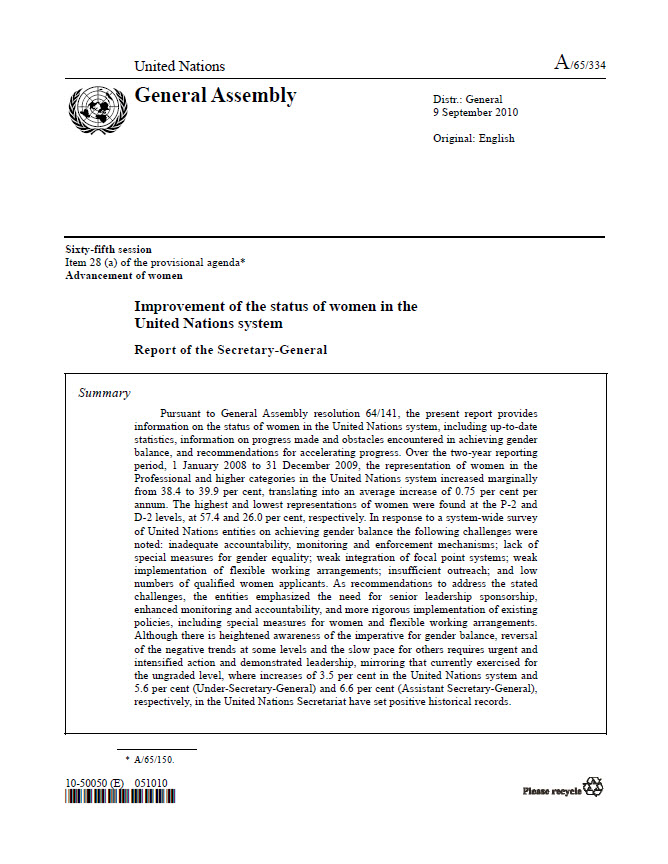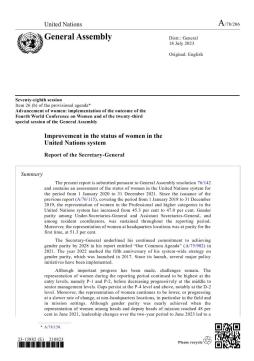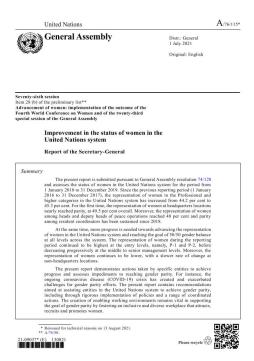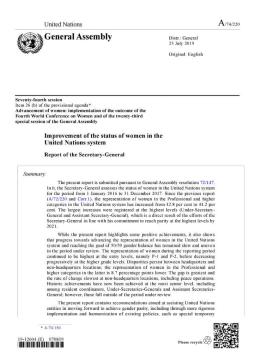Improvement of the status of women in the United Nations system: Report of the Secretary-General (2010)
Pursuant to General Assembly resolution 64/141, the present report provides information on the status of women in the United Nations system, including up-to-date statistics, information on progress made and obstacles encountered in achieving gender balance, and recommendations for accelerating progress.
Over the two-year reporting period, 1 January 2008 to 31 December 2009, the representation of women in the Professional and higher categories in the United Nations system increased marginally from 38.4 to 39.9 per cent, translating into an average increase of 0.75 per cent per annum. The highest and lowest representations of women were found at the P-2 and D-2 levels, at 57.4 and 26.0 per cent, respectively.
In response to a system-wide survey of United Nations entities on achieving gender balance the following challenges were noted: inadequate accountability, monitoring and enforcement mechanisms; lack of special measures for gender equality; weak integration of focal point systems; weak implementation of flexible working arrangements; insufficient outreach; and low numbers of qualified women applicants. As recommendations to address the stated challenges, the entities emphasized the need for senior leadership sponsorship, enhanced monitoring and accountability, and more rigorous implementation of existing policies, including special measures for women and flexible working arrangements.
Although there is heightened awareness of the imperative for gender balance, reversal of the negative trends at some levels and the slow pace for others requires urgent and intensified action and demonstrated leadership, mirroring that currently exercised for the ungraded level, where increases of 3.5 per cent in the United Nations system and 5.6 per cent (Under-Secretary-General) and 6.6 per cent (Assistant Secretary-General), respectively, in the United Nations Secretariat have set positive historical records.




